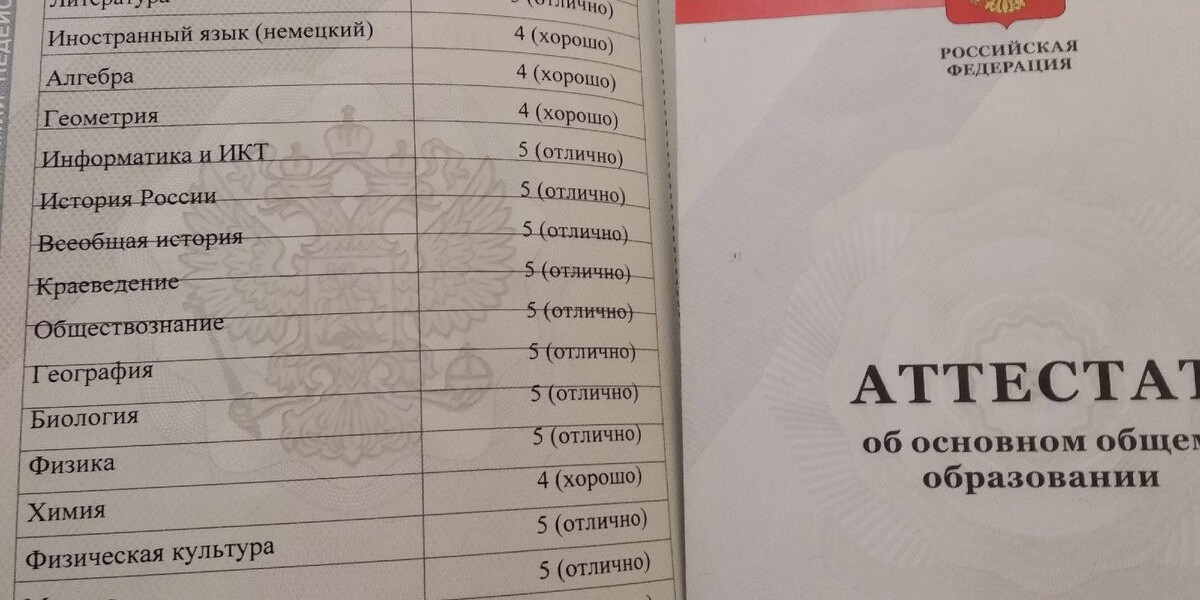ESG reporting and materiality assessments have become crucial for Malaysian businesses aiming to meet regulatory requirements and stakeholder expectations. But where do you begin with this complex process?
The key to successful ESG implementation lies in conducting thorough materiality assessments - a systematic approach to identifying and prioritizing environmental, social, and governance issues that matter most to your business and stakeholders.
Whether you're a public listed company meeting mandatory requirements or a forward-thinking business embracing sustainability, this guide will help you navigate the ESG landscape with confidence and precision. Let's explore how you can transform ESG challenges into strategic opportunities.
Understanding ESG Materiality Assessment
A materiality assessment serves as a strategic tool that helps organizations identify and prioritize the most significant Environmental, Social, and Governance (ESG) issues affecting their business and stakeholders. This systematic evaluation process enables companies to focus their sustainability efforts and resources on areas that matter most.
When conducting an ESG materiality assessment, companies engage with various stakeholders to gather insights about which sustainability topics are most relevant to their operations and impact. This collaborative approach ensures a comprehensive understanding of both internal and external perspectives.
The Role of Double Materiality
Double materiality has emerged as a crucial concept in ESG materiality assessment, considering both the impact of sustainability issues on a company's financial performance and the company's impact on society and the environment. This dual perspective helps organizations make more informed decisions about their sustainability initiatives.
The financial materiality aspect examines how ESG factors affect a company's value creation and risk management. For instance, climate change risks could impact operational costs, while strong governance practices might enhance investor confidence.
The impact materiality focuses on how a company's activities affect its stakeholders and the environment. This includes evaluating environmental footprint, labor practices, community relations, and other sustainability aspects that stakeholders consider important.
Through this comprehensive approach, organizations can better align their sustainability strategies with both business objectives and stakeholder expectations, making the materiality assessment a valuable strategic tool for long-term success.
The Malaysian ESG Reporting Landscape
The Malaysian business landscape has witnessed a significant transformation in recent years, particularly in environmental, social, and governance (ESG) reporting practices. As sustainability becomes increasingly crucial for business success, Malaysian companies are adapting to meet evolving stakeholder expectations and regulatory requirements.
Regulatory Framework and Requirements
Malaysia has established a robust framework for ESG reporting, driven by various regulatory bodies and initiatives. The Securities Commission Malaysia (SC) has taken a leading role in promoting sustainability reporting through the Malaysian Code on Corporate Governance (MCCG).
Listed companies on Bursa Malaysia must comply with specific ESG reporting requirements. Since 2016, these organizations have been mandated to include sustainability statements in their annual reports, addressing material economic, environmental, and social risks and opportunities.
The framework emphasizes the importance of sustainability reporting aligned with globally recognized standards like the Global Reporting Initiative (GRI). This alignment helps Malaysian companies maintain international competitiveness while ensuring transparency in their ESG practices.
Recent updates to the regulatory framework have introduced enhanced disclosure requirements, particularly focusing on climate-related risks and opportunities. Companies must now provide more detailed information about their environmental impact, social responsibility initiatives, and governance structures.
The Malaysian ESG reporting landscape also encourages voluntary adoption of additional frameworks beyond mandatory requirements. This flexibility allows companies to choose reporting methodologies that best suit their industry and stakeholder needs while maintaining compliance with basic regulatory standards.
Small and medium-sized enterprises (SMEs) are increasingly encouraged to embrace ESG reporting practices, though requirements remain less stringent compared to listed companies. This gradual approach helps build capacity across the business ecosystem while promoting sustainable practices.
The regulatory environment continues to evolve, with increasing emphasis on data quality, verification processes, and stakeholder engagement. Companies are expected to demonstrate clear progress in their sustainability journey through comprehensive ESG reporting.
Conducting a Comprehensive Materiality Assessment
A systematic process for materiality assessment begins with careful planning and a structured approach to ensure comprehensive coverage of all relevant ESG aspects.
Stakeholder Identification and Engagement
The first crucial step in the assessment process involves mapping out key stakeholders who influence or are influenced by your organization's ESG performance. This includes internal stakeholders like employees and management, as well as external parties such as investors, customers, suppliers, and regulatory bodies.
To ensure effective engagement, develop tailored communication strategies for different stakeholder groups. Use a mix of methods including:
- Online surveys
- One-on-one interviews
- Focus group discussions
- Workshop sessions
Remember to document all interactions and feedback systematically to maintain transparency throughout the process.
Data Collection and Analysis
Implementing a systematic approach to data gathering helps ensure the quality and reliability of your materiality assessment. Start by collecting both qualitative and quantitative data through:
- Industry research and benchmark studies
- Regulatory requirement reviews
- Peer analysis reports
- Market trend assessments
- Stakeholder feedback documentation
Analyze the collected data using standardized evaluation criteria to identify patterns and emerging themes. This helps establish a clear picture of potential material issues affecting your organization.
Prioritization of Material Issues
Once data collection is complete, prioritize identified issues based on:
- Impact on business operations and strategy
- Stakeholder concerns and expectations
- Current and emerging regulations
- Industry trends and best practices
Create a materiality matrix to visualize and rank issues according to:
- Significance to stakeholders
- Impact on business success
- Level of organizational control
- Time horizon of impact
Use this prioritization to develop targeted action plans and allocate resources effectively. Regular review and updates of the materiality assessment ensure it remains relevant and aligned with changing business conditions.
Supply Chain Considerations in ESG Assessment
Supply chain management plays a pivotal role in determining an organization's ESG performance. A comprehensive assessment must consider the entire value chain, from raw material sourcing to final product delivery, as it significantly impacts environmental and social outcomes.
Managing Environmental Impact
The environmental footprint of supply chains often extends far beyond direct operations. Your supply chain team must carefully evaluate and monitor various aspects of the value chain to minimize negative environmental impacts.
Companies need to assess their suppliers' environmental practices, including:
- Energy consumption and carbon emissions
- Waste management protocols
- Water usage and conservation efforts
- Use of hazardous materials
- Transportation and logistics efficiency
Implementing sustainable practices across the supply chain requires close collaboration with suppliers. Organizations should:
- Set clear environmental standards for suppliers
- Conduct regular audits and assessments
- Provide training and support for improvement
- Track and measure environmental performance metrics
- Establish incentives for sustainable practices
Modern supply chain management increasingly focuses on circular economy principles. This involves:
- Designing products for recyclability
- Minimizing packaging waste
- Implementing take-back programs
- Using recycled materials
- Optimizing reverse logistics
The rise of digital technologies has enabled better tracking and monitoring of environmental impacts throughout the value chain. Supply chain teams can now use advanced analytics and real-time data to:
- Monitor carbon emissions across transportation routes
- Track waste generation at different stages
- Identify opportunities for efficiency improvements
- Measure supplier compliance with environmental standards
- Generate comprehensive environmental impact reports
Best Practices for Implementation
Leadership Engagement
Securing strong leadership commitment is fundamental for a successful ESG materiality assessment. When top management actively participates and champions the process, it sets a clear tone throughout the organization. Leaders should regularly communicate the importance of ESG initiatives and demonstrate their personal investment in the assessment outcomes.
To ensure effective materiality assessment, leadership teams should establish clear governance structures and accountability mechanisms. This includes appointing dedicated ESG committees or task forces responsible for overseeing the assessment process and implementing recommendations.
Leaders must also allocate adequate resources, both financial and human capital, to support the assessment process. This demonstrates the organization's commitment to ESG integration and helps maintain momentum throughout the implementation phase.
Performance Monitoring
Implementing robust monitoring systems is a critical best practice for tracking the progress of materiality assessment initiatives. Organizations should develop specific key performance indicators (KPIs) aligned with identified material topics to measure success effectively.
Regular review cycles help ensure the assessment remains relevant and responsive to changing stakeholder needs. Companies should establish:
- Quarterly progress reviews of implementation milestones
- Annual reassessment of material topics
- Continuous stakeholder feedback mechanisms
- Data collection and verification processes
To maintain the effectiveness of the materiality assessment, organizations should:
- Document and track changes in material topics over time
- Update assessment methodologies based on learned experiences
- Integrate findings into strategic planning processes
- Share progress reports with key stakeholders
Performance monitoring should also include regular benchmarking against industry peers and best practices to identify areas for improvement and ensure continued relevance of the assessment framework.
Integration with Business Strategy
Long-term Value Creation
Integrating ESG considerations into your business strategy isn't just about compliance - it's a cornerstone of effective ESG strategy that drives sustainable growth and competitive advantage. When Malaysian businesses align their core operations with ESG principles, they create lasting value for both stakeholders and shareholders.
A well-integrated ESG strategy helps organizations identify and capitalize on emerging opportunities while managing potential risks. By embedding responsible business practices into decision-making processes, companies can better anticipate market shifts, regulatory changes, and evolving stakeholder expectations.
Consider these strategic integration approaches:
- Align ESG goals with business objectives
- Incorporate ESG metrics into performance evaluations
- Develop clear governance structures for ESG oversight
- Ensure regular monitoring and reporting of ESG progress
- Create accountability at all organizational levels
The success of ESG integration largely depends on leadership commitment and clear communication across all business units. When leaders demonstrate genuine commitment to ESG principles, it cascades throughout the organization, fostering a culture of sustainability and responsibility.
Malaysian businesses that successfully integrate ESG considerations often experience:
- Enhanced operational efficiency
- Improved stakeholder relationships
- Stronger risk management capabilities
- Better access to capital
- Increased innovation opportunities
Remember that ESG integration is an ongoing journey rather than a one-time exercise. Regular review and refinement of your approach ensures continued alignment with both business objectives and stakeholder expectations.
To maintain momentum, establish regular check-ins to assess progress and adjust strategies as needed. This helps ensure that ESG remains a dynamic part of your business strategy rather than a static compliance exercise.
Reporting and Communication
Quality Assurance
A robust quality assurance process is essential when preparing your sustainability report to ensure accuracy, completeness, and reliability of the disclosed information. This process begins with thorough verification of preliminary results before they make their way into the final report.
Start by establishing clear data collection protocols and documentation standards. Every piece of information included in your sustainability report should be traceable to its source, with proper documentation of calculation methodologies and assumptions made during the analysis.
Implement a multi-level review process where different teams cross-check the data and findings. This helps identify any inconsistencies or errors early in the reporting process. Consider having both internal and external stakeholders review the preliminary results to provide diverse perspectives and enhance credibility.
Data validation is another crucial aspect of quality assurance. Use automated tools and manual checks to verify data accuracy and consistency across different sections of the report. This includes comparing current data with historical trends and industry benchmarks to identify any unusual patterns or discrepancies.
Consider engaging third-party assurance providers to verify your sustainability report. External verification adds an extra layer of credibility and demonstrates your commitment to transparency. These experts can provide independent assessment of your reporting processes and data accuracy.
Document all quality control procedures and maintain detailed records of reviews and modifications. This creates an audit trail and helps demonstrate the rigor of your reporting process to stakeholders. Regular training sessions for team members involved in report preparation can help maintain high quality standards.
Remember to allocate sufficient time for the quality assurance process in your reporting timeline. Rushing through this crucial step can lead to errors and compromise the overall quality of your final report. Regular feedback loops between different teams can help streamline the process and improve efficiency.
Conclusion
As Malaysian businesses navigate the evolving ESG landscape, conducting robust materiality assessments is no longer optional—it's a strategic imperative. By following the systematic approach outlined in this guide, organizations can effectively identify, prioritize, and address their most significant sustainability impacts while ensuring compliance with regulatory requirements. Remember, successful ESG implementation requires continuous stakeholder engagement, thorough data collection, and regular reassessment of material issues. The insights gained through materiality assessments serve as the cornerstone of an effective ESG strategy, enabling businesses to make informed decisions that drive sustainable growth and create long-term value. Take the first step towards ESG excellence by implementing these best practices in your organization. Whether you're just beginning your sustainability journey or looking to enhance existing practices, working with a qualified ESG consultant in Malaysia can provide the expertise needed to navigate complex frameworks and tailor strategies to your unique business needs. Investing in comprehensive materiality assessments will position your business for success in Malaysia's evolving corporate landscape. The future of business is sustainable—ensure your organization is ready to lead the way.








